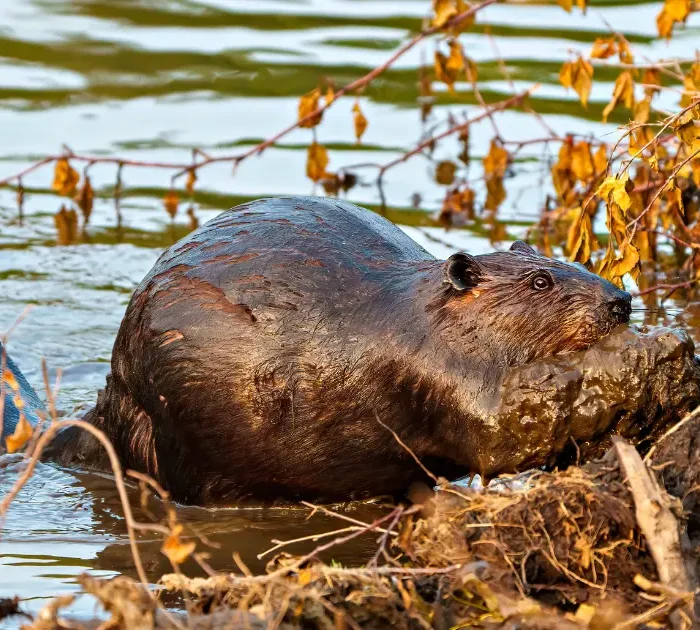Beaver Coexistence

Photo by Jillian Cooper / Getty Images
Beavers are ecological heroes that provide incredible benefits to their environment and everyone with whom it’s shared. These benefits include storing water during droughts, creating wildfire resilient wetlands, flood mitigation, increasing water quality, enhancing biodiversity, and carbon sequestration.
However, beavers are often trapped due to concerns around their impact to human infrastructure, eliminating not only the beavers, but the ecosystem benefits they provide. Fortunately, there are evidence-based methods that allow beavers to remain on the land while preserving and protecting human infrastructure.
Coexistence solutions include installing flow devices in beaver ponds, tree wrapping, diversionary planting, and exclusion fencing. Alternatives to trapping and relocation have been tested and proven in communities across North America, providing real-world examples of what human-beaver coexistence looks like.
Beaver coexistence strategies are detailed in The Fur-Bearers’ Beaver Coexistence Handbook for Municipalities and Landowners, found in the Resources section at the bottom of this page.
How Beavers Help Communities and Ecosystems
- Beavers create habitats that are resilient against wildfires
- Beaver activity helps maintain rare butterfly species and increase plant diversity
- Beaver activity benefits aquatic biodiversity and systems
- Beavers create and maintain vital wetlands during extreme droughts
- The ecoystem services of beavers is valued in the hundreds of millions of dollars annually
Trapping Isn't A Long Term Solution
Traditional beaver management has focused on trapping, killing, or relocating beavers. However, these are neither viable long-term approaches nor viewed favourably by the public. When a beaver is killed or removed from their ecosystem, other beavers may move in and recolonize the area, an outcome that results in the needless deaths of beavers, wastes resources, and ultimately solves nothing.
Effective management approaches address specific, local challenges and implement coexistence management strategies accordingly, so that beavers can remain in their habitat and any damage or risk to human infrastructure is mitigated.
To read an example of how a municipality shifted its beaver management strategy from killing to coexistence, click here to read an overview of how the City of Airdrie, Alberta, responded to beavers living its Nose Creek corridor.
Resources
- Beaver Coexistence Handbook for Municipalities and Landowners (English | Francais)
- The Fur-Bearers’ Beaver Institute Scholarship
- Beaver Management Literature Review
- Ethical Wildlife Management
- Coexistence Resources
Latest Beaver Articles
Thank a beaver on Clean Air Day
The eco-engineering skills of beavers lead to cleaner air and water for all of us. Find out how!
Scholarship awarded to support coexistence with beavers
The Fur-Bearers is pleased to award our Beaver Institute Scholarship for 2024.
BC rejects call to end commercial trapping of beavers
The Ministry of Forests has rejected calls to end the commercial trapping of beavers after a devastating wildlife season.
The Beaver Institute with Adam Burnett
The Beaver Institute aims to restore ecological balance with beavers, and offers incredible training programs. Learn more on this week's podcast!
Open Letter: Beavers can help fight the climate crisis
Ecological benefits of beavers are well-documented in research, but are undermined by the commercial trapping licensing regime of the government of BC.
Action Alert: End commercial trapping of beavers in B.C.
The province needs to implement urgent measures to stop the commercial and recreational trapping of beavers and recognize their ecological benefits.
It’s Canada’s worst fire season. How can beavers help fight wildfires?
Beavers are known to be ecosystem engineers. Can they also help during times of drought and wildlfires?
City of Airdrie shifts from killing beavers to coexistence
A beaver assessment accepted by city council recommends a coexistence-centred approach to beaver management.







